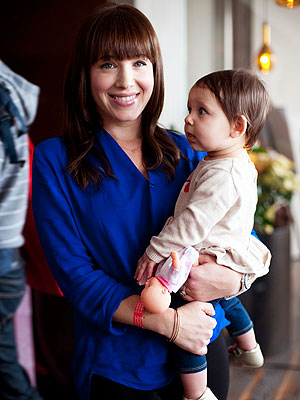NEW YORK (Reuters) - Stocks struggled to extend the previous week's gains, dropping on Monday as disappointing U.S. factory numbers dampened optimism about China's economic growth.
The declines broke a three-day streak of gains for the S&P 500, keeping it shy of its 50-day moving average of about 1,420, a level that the index has been below since October 22, and now serving as a key resistance point for investors.
Manufacturing activity in the United States surprisingly contracted in November, the Institute for Supply Management said, dropping to its lowest level in more than three years. Economic data has been mixed in recent months, fanning worries about the pace of growth at a time when investors are already concerned about the "fiscal cliff" issue in Washington.
The ISM number "was below expectations that were already conservative, and that puts an exclamation point on the concern many of us have about the cliff's impact on the economy," said Leo Grohowski, chief investment officer at BNY Mellon Wealth Management in New York.
Markets had opened higher as output by China's factories grew in November for the first time in more than a year, data showed. Investors look to strength from China, the world's second-largest economy, to offset weak growth in the United States and Europe.
Still, the fiscal cliff remains investors' primary focus, with political haggling continuing over how to deal with large automatic spending cuts and tax hikes scheduled to kick in next year. The worry is that the combination of reduced spending and higher taxes could tip the U.S. economy back into recession.
While off its highs for the year, the S&P 500 is still up 12.1 percent for 2012.
"This could be the last opportunity for investors to take profits" after an unexpectedly strong year, said Grohowski, who helps oversee about $170 billion in assets.
Materials were the weakest sector on Monday, led lower by Newmont Mining
The Dow Jones industrial average <.dji> fell 59.98 points, or 0.46 percent, to 12,965.60 at the close. The Standard & Poor's 500 Index <.spx> declined 6.72 points, or 0.47 percent, to 1,409.46. The Nasdaq Composite Index <.ixic> dropped 8.04 points, or 0.27 percent, to end at 3,002.20.
U.S. Treasury Secretary Timothy Geithner pushed Republicans on Sunday to offer specific ideas to cut the deficit. He predicted that they would agree to raise tax rates on the rich to obtain a year-end deal to avoid the fiscal cliff.
Among other factors serving to offset the ISM report on U.S. factories were two developments in the euro zone: Spain formally requested the disbursement of more than $50 billion of European funds to recapitalize its crippled banking sector, while Greece said it would spend 10 billion euros ($13 billion) to buy back bonds in a bid to reduce its ballooning debt.
The PHLX Europe sector index <.xex> added 0.1 percent.
Dell
Advanced Micro Devices was the S&P's top gainer, rising 7.3 percent to $2.36. Options traders appeared to be betting on further gains ahead. Early options order flow was focused on upside April calls, including a sweep of 3,594 April $3.50 strike calls for 16 cents per contract when the market was 14 cents to 16 cents, said WhatsTrading.com options strategist Frederic Ruffy.
Retail stocks were among the weakest of the day, with J.C. Penney Co
Volume was light, with about 5.58 billion shares traded on the New York Stock Exchange, the Nasdaq and the NYSE MKT, well below last year's daily average of 7.84 billion.
Decliners outnumbered advancers on the NYSE by a ratio of 3 to 2, while on the Nasdaq, about 14 stocks fell for every 11 that rose.
(Additional reporting by Doris Frankel; Editing by Jan Paschal)
























